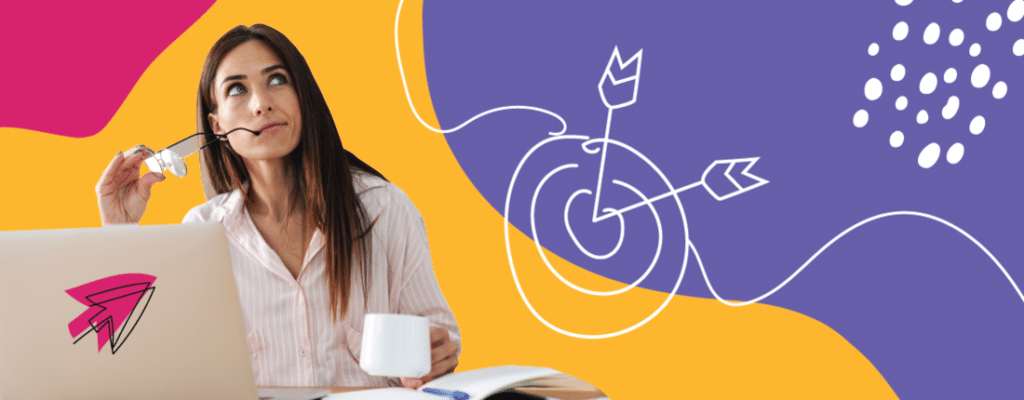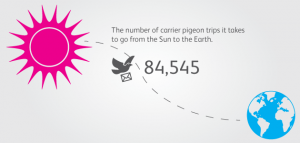In competitive markets, it is common to see CMOs investing too much in attracting new leads to reach their conversion goals. However, they end up putting aside a crucial portion of the audience: those who are already clients.
Yes, keeping new clients coming is crucial in any Digital Marketing strategy. But customer loyalty is the key to reach sustainable growth in any business.
So how about exploring more possibilities on the matter? Let’s talk about what it is, why to do it, and how to plan a perfect customer loyalty program. We’ll cover the following topics:
- What is customer loyalty?
- What are the benefits of having loyal customers?
- How to implement a customer loyalty program?
- 5 examples to get inspired
What is customer loyalty?
The concept of customer loyalty itself doesn’t hold any secrets. First and foremost, it is an indicator of how likely a customer is to repeat the experience after their first purchase.
But the term also refers to the method in itself. It conveys the strategies, tools, and actions that help people to become regular customers, whether buying products or using a service continually.
A loyal customer usually becomes a company’s asset. They are your closest link to the target audience and a personification of the ideal client.
Searching for more of these individuals and getting to know them better are fundamental steps to reach constant and ever-growing sales.
What are the benefits of having loyal customers?
It is hard not to see loyalty as a good thing in any scenario. After all, it’s about clients buying more from you.
However, it is vital to understand what a good loyalty program means in practice.
That involves getting to know the various benefits it brings to a Digital Marketing plan and its business. So here’s a list of the main ones!
Selling more to converted clients
There’s a vital indicator for online businesses, especially virtual stores, that’s directly linked to customer loyalty. We are talking about Lifetime Value (LTV).
LTV shows you how much time on average a person stays as a customer and how much they spend in that period.
Improving this KPI can maximize the return of each new client. We know how hard it is to get them, so why not make the most out of this after winning a customer?
Reducing costs in marketing
As a marketer, you are aware of the costs involved in attracting new leads from the start.
Such work includes helping them know your brand, getting their attention, making them consider the options, and convincing them to buy.
Customer Acquisition Cost (CAC) is always higher when the buyer journey is longer. That’s why you should focus on those who are already closer to another purchase.
Therefore, having a balance between getting new leads and nurturing converted clients is the best strategy for a lower CAC.
Getting predictable income
A loyal customer base is always consuming something from your brand. For retailers, this is a competitive advantage.
So, instead of working all year to get seasonal income, take advantage of customer loyalty to make your business have profit all year long.
After all, a predictable cash flow helps planning and expanding at a constant rate.
Creating a solid user base
Most customers come and go, but those who stay form a core that gives your brand stability.
A loyal audience is eager to share thoughts and data about their habits, expectations, and experiences.
Getting to know such customers better will reflect on how you attract new ones like them.
Being more engaging
When a customer becomes loyal, it usually doesn’t mean they only want to buy more. People in that position like to be part of the brand’s life, interacting, promoting, and engaging.
It means that the bigger your loyal base is, the more interaction you get on campaigns and live experiences. They participate, tag friends, and talk about you.
Thinking about what Digital Marketing means today, loyalty isn’t just about more sales. It is about enhancing brand awareness and visibility online.
Creating a premium image
We can’t deny it: humans like to feel special. So why not use this in your business’ favor?
Loyalty programs and exclusive content or products give the brand a premium quality that separates occasional customers from recurring ones.
It’s not just about making them want to pay more but also how they see your brand and its position in the market as a whole.
That perception reflects on your Content Marketing strategy and social media interactions. It brings new possibilities for niche-focused campaigns and more engagement.
It also affects the kind of audience you attract — one that is eager to be loyal and create a deep connection with your brand.
How to implement a customer loyalty program?
Many factors come into play when planning a new loyalty program: target market, the nature of your solution, profit goals, brand building goals, and so on.
So it’s hard to come here and give you a ready formula that will work 100%. Such a thing doesn’t even exist.
However, what we can do for sure is to give you the points you need to pay attention to when creating your blueprint. Here are some tips to elaborate and implement the strategy.
Know where you are going
Knowledge is everything when starting a loyalty program. Instead of throwing the first idea on the table, do some research on your target audience.
Enhance your buyer persona mapping and do some benchmark to check out what the competition is doing.
After that, you will have a better foundation to start formatting the plan. You should answer questions like:
- Where to focus my efforts?
- What can I give to my clients?
- What do I expect to get back?
All of that depends on your business and customers, as well as the relationship between them.
Create an incredible buying experience
One thing we need to highlight: even if you offer the right incentives, a poor buying experience will throw all your efforts down the drain.
We are talking about the journey of browsing, choosing, paying, and receiving. Along such a way, we also have customer success and automation for communication.
Even when a business doesn’t have a specific loyalty program, the experience itself can be enough to make customers want to repeat it and recommend it to friends.
Reward clients who buy more than once
You can improve your customer loyalty by planning the right incentives and giving them at the right time.
A huge benefit from marketing to your converted client base is that you have more data on them.
That includes things like what they want, what they buy, when their birthday is, and how they browse for products.
Use that in your favor and offer rewards like free shipping and special discounts. You can even create tiered benefits based on how much they spend or how many times they buy.
Apart from a fixed program, this is the best way to convince customers to come back. And talking from a marketing standpoint, you don’t even need to put that much effort into it.
That’s right. Automation for email marketing can do that job for you. But remember to pay attention when creating triggers to stimulate interest.
Create a structured, fixed program
A lot of online businesses are investing in more sophisticated, subscription-based loyalty programs.
What if you do that too?
That usually involves charging a small fee for the customer to access benefits such as free shipping, early access, virtual events, and better payment options.
The great thing about such a program is assuring predictable income from two different sources.
On the one hand, you have a recurring payment system. On the other, you make those customers more prone to keep buying from you.
But let’s be honest. Customers won’t sign in your program just because you invited them. You have to structure a plan with clear benefits and always keep your promises.
Treat them as exclusive clients
People want to be part of your brand and want to feel special. So the best way to implement loyalty programs is to give that to them.
Think about what you could do that is exclusive for the loyal base. That might include closed live events, special live coverage, special interactive content, and access to new products or services before the general public.
As a marketing strategy, you can also have a more direct connection to your customers, bringing them close, and valuing more their feedback. The more exclusive they feel the more people will desire that too.
Measure the evolution of your strategy
These tips will help you a lot when executing your customer loyalty strategy. But this is the kind of effort that never ends and always has room for improvement.
So keep an eye on the KPIs, especially CAC and LTV. If you have a subscription plan, add Churn Rate to these main indicators.
When you cross those numbers with the Digital Marketing results, you start to understand what differentiates the seasonal customers from those who seek a deeper connection.
5 examples to get inspired
Until now, we covered everything on customer loyalty: what it is, its importance, and how to do it. Now, how about some real-life examples to set you off on this journey?
We listed 5 cases that show the wide variety of approaches and goals you can set for your business. Check it out!
1. Amazon Prime
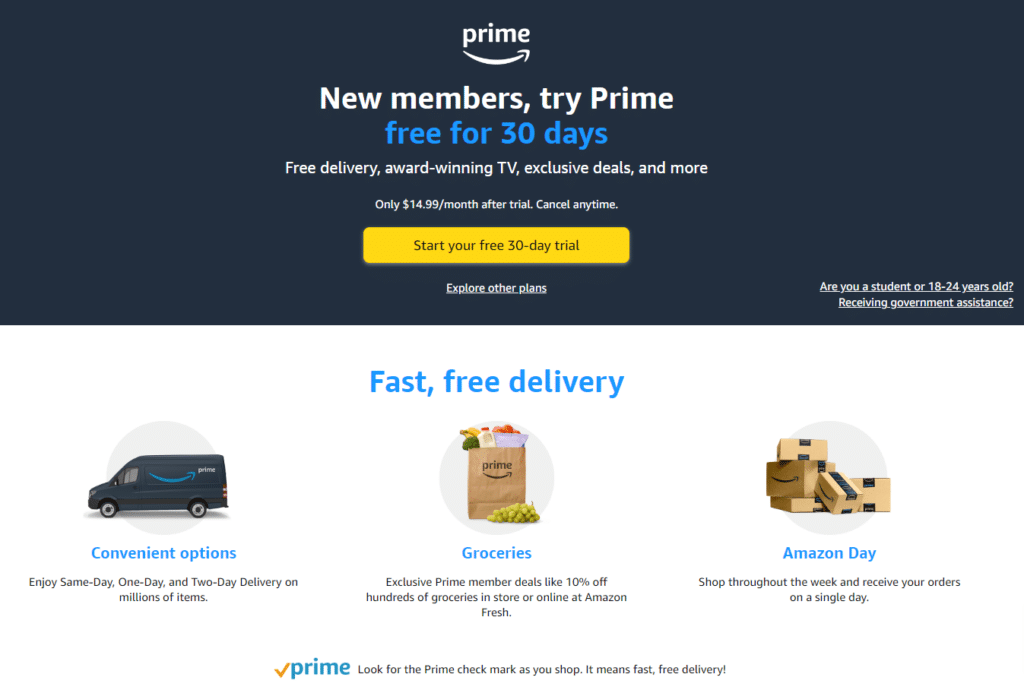
Your business might not be as big as Amazon, but what they did with Prime is a great example to follow — and it doesn’t matter your company’s size or audience.
Amazon Prime is a subscription-based loyalty program that focuses on delivering real benefits to the customer: free shipping, special discounts, music and video streaming, games, ebooks, among others.
But the most interesting thing to highlight here is the Prime Day. Having a special event focused on the loyal base creates a seasonal date just for the brand and boosts conversions that will last until next year.
2. DSW
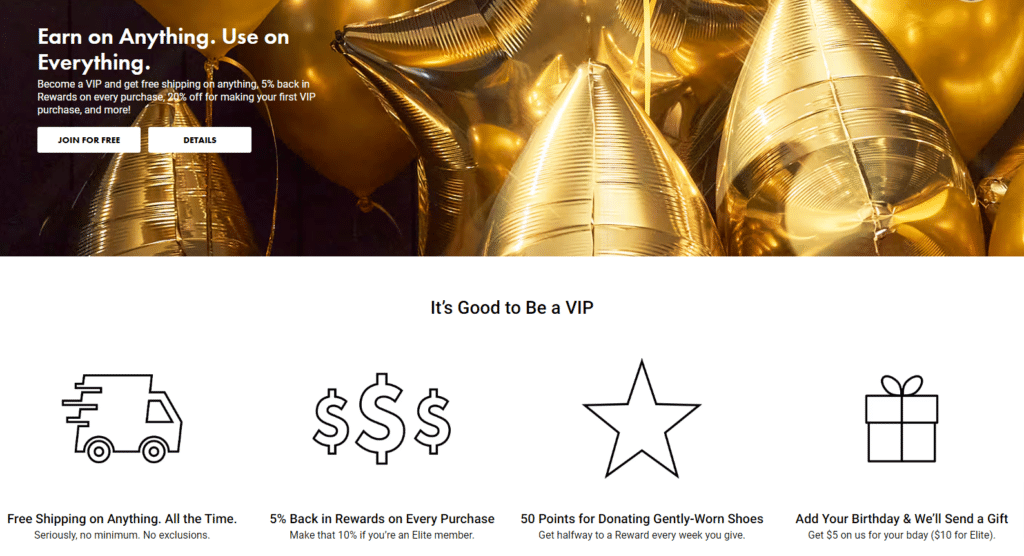
Designer Shoe Warehouse is a retailer with a classic but very efficient case of customer loyalty.
It’s a simple point system: the more you spend, the more points you have to use for a discount on the next purchase.
That kind of program is interesting because it creates a reason for customers to come back without much effort.
After all, they had a great buying experience today and can do the same later, besides paying less. Why wouldn’t those customers be loyal?
3. The North Face
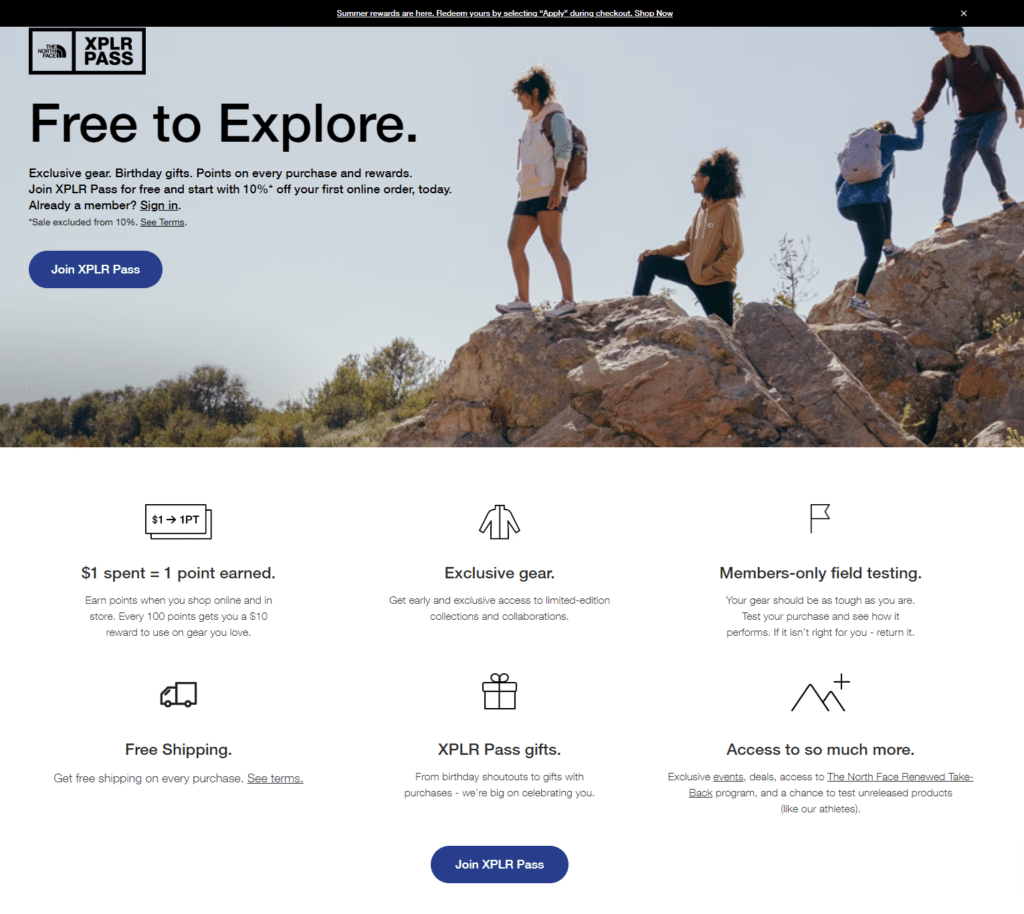
The VIPeak program from The North Face is a great example of how knowing your audience and working with that knowledge always pays off.
The North Face has a point-based reward system, as does DSW. However, as a brand focused on apparel for open-air activities, they also promote special events and give points for those who attend them, like a hike.
It’s the perfect combination of engagement and loyalty-building.
4. Apple
Apple is an example of creating a status for those who are loyal to the brand. That’s because such a perception doesn’t come from a specific program. It’s all brand building and marketing.
The way you work with content and ads also help in developing customer loyalty, even if you are not giving something in exchange. Making people want to consume your brand just to be part of it is a powerful advantage.
5. Sephora
Of course, you can build exclusivity with rewards. Sephora is a master in that practice, offering tiers and exclusive benefits based on how much time and money the customer spends on the brand.
The secret is to offer varied and tiered rewards. Sephora not only lets customers exchange points for discounts but also offer samples and experiences like exclusive events, meet-and-greets, and first access to new products.
With all these examples, we can see there isn’t a single path to follow. Customer loyalty consolidates your client base, gives you more financial predictability, and helps you get closer to the customers that want to be part of your brand.
A good way to keep your customers loyalty is by having them with you. In this article, we discussed everything you need to know about customer retention!
